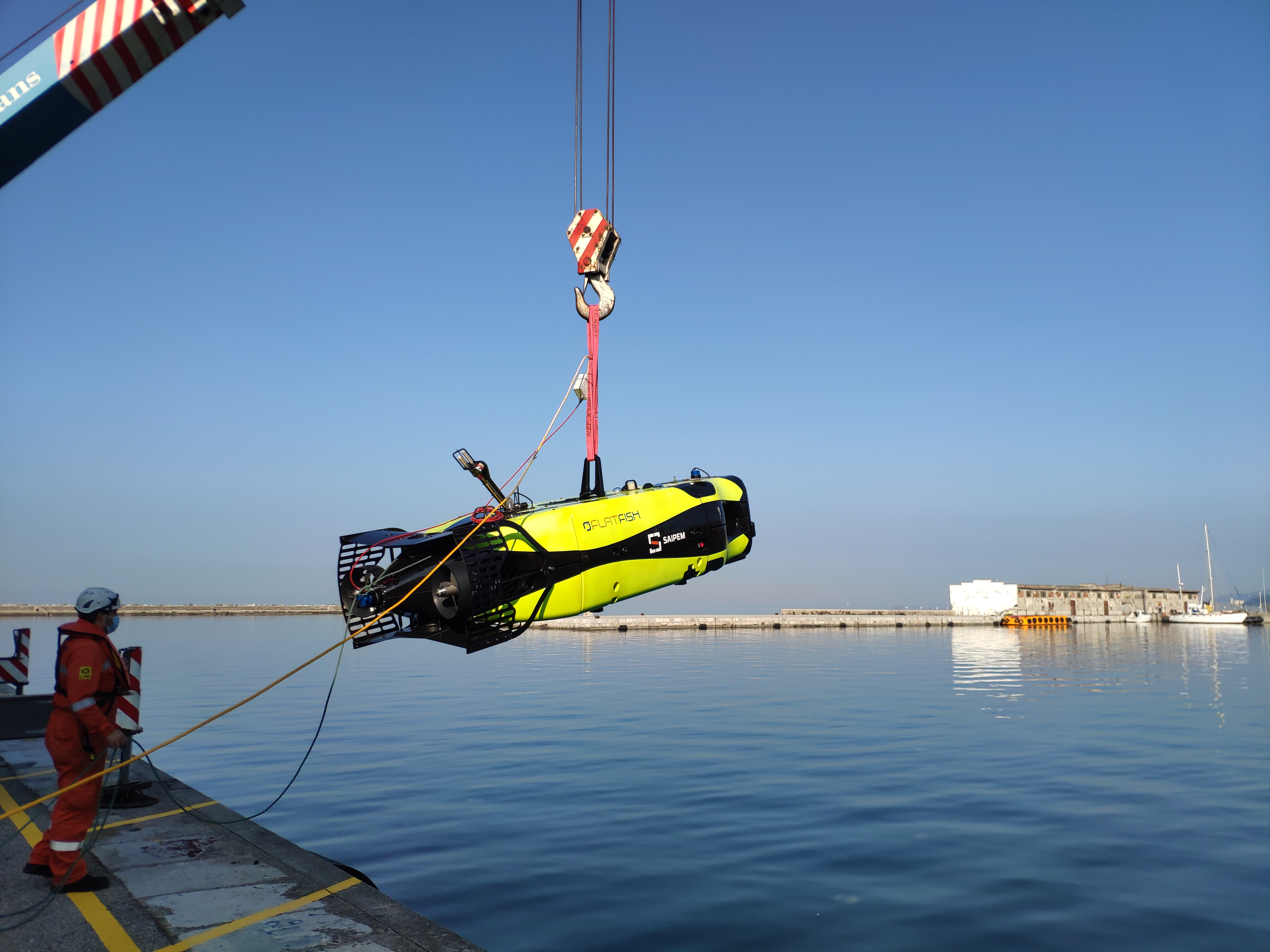Despite various subsea technologies employed by robotics companies, the ocean is still full of mystery with what is said to be more than 70% remaining undiscovered. However, one oil and gas company looks to shift that paradigm with its new species of fish floating around subsea: the Saipem FlatFish.
While not technically alive, the FlatFish resembles something like an actual fish with its square nose and propeller tail.

The fleet of FlatFish subsea drones are engineered, developed, commercialized and operated by Sonsub, Saipem’s center of excellence for underwater technologies and digital automation. The drone handles high complexity inspections of pipelines and subsea structures and can reach water depths of 3000 meters (m). The groundbreaking technology won the 2023 Spotlight on New Technology Award at the Offshore Technology Conference earlier this year.
“We are at the forefront of technologies…we think that there is nobody else in the competition that is able to execute what we can underwater, which is the monitoring of risers by moving on a three-dimensional path,” Matteo Marchiori, head of Sonsub Robotics, told Hart Energy.
The FlatFish, along with the Hydrone-R and Hydrone-W, are part of Saipem’s Hydrone family. Each Hydrone is an underwater vehicle designed to operate subsea, with the Hydrone-R used for inspection and intervention and the Hydrone-W for work. The FlatFish, also known as the Hydrone-S, is strictly used for inspection. The Hydrone-R is fully electric and can operate with or without a tether, whereas the Hydrone-W requires an umbilical as it is the largest and can stay subsea for up to 12 months.
As an option, a Tether Management System can be fitted on the stern of Hydrone-R in order to pay-in or pay-out a fiber optic tether for control and real-time video streaming. The autonomous FlatFish does not require a tether and can be permanently docked subsea, unlike the other Hydrones.
Despite the differences in the Hydrone family, there is a commonality between the sensors, software, coding, architecture and other equipment in order to maximize cost efficiency and enable easier sharing of data between the vehicles.
While there are many other AUVs on the market, what sets the FlatFish apart is its IoT data harvesting ability.
“We are basically offering, along with an interoperable adaptive wireless node combined with drones, an array and network of communication that can be used for harbor protection, pipeline protection and protection of the critical facilities offshore,” Marchiori said. “The program that we are currently executing, in connection with creating an underwater network of subsea IoT, is mirroring what is happening on earth when you're using your smartphone and you are connecting to a hotspot.”

This phenomenon creates an underwater Wi-Fi network of sorts, creating links between structures that are able to communicate with the drones located subsea and harvest data in a wireless configuration.
The FlatFish, which was tested in 1800 m of water in a live Brazilian asset in 2018, is also part of Italy’s Oil Spill Response Ltd. (OSRL) assets. According to a dedicated agreement, FlatFish can be operated for environmental monitoring and inspection of asset integrity. Its other tasks in Italy included surveying, leakage detection through water column plume and dispersant concentration monitoring, environmental assessment and patrolling. Saipem also entered into contracts with Equinor in Norway for the use of Hydrone-R, Shell and Petrobras in Brazil for the use of FlatFish and there are dialogues underway for the deployment of their drones in the Middle East.
Although the number of contracts for the FlatFish are starting to increase, Marchiori still sees a fundamental criticality regarding its adoption, as well as that of other AUVs.
“We encourage clients to be more open to…give the industry a chance to demonstrate that we are moving into a new era for subsea robotics, and such transition calls for deployment, which is a fundamental step,” he said.
While Marchiori said the commercialization of the FlatFish and other subsea drones has been limited, he still sees huge potential. Once clients begin to trust these technologies, he said, subsea drones will see a boom in the market.
To further advance the FlatFish and its related technologies, Saipem is focusing on not just adding a manipulator so that the vehicle can be used for intervention as well as inspection, but on increasing endurance of the drone.
“Endurance is vital. The more we can get away from launching point, the better,” Marchiori said. “Of course, we can have more than one vehicle serving a field, but if the same vehicle is able to run for 200 kilometers, there is no longer need for a second vehicle to be deployed.”
Recommended Reading
Appalachian Hydrogen Hub Secures Funding, Moves to Phase 1
2024-08-01 - Nearly one dozen projects, including ones by EQT Corp. and CNX Resources, are part of the Battelle-led hub in West Virginia, Ohio and Pennsylvania.
EQT: Glut of Low Carbon Tech Like ‘Manhattan Project on Steroids’
2024-08-19 - Executives at EQT, NOV and Oxy Low Carbon Ventures discussed technology, scalability and other energy transition needs at a recent SPE conference.
BP, Repsol-backed Startup Takes Aim at Lower Hydrogen Costs
2024-07-31 - Wisconsin-based Advanced Ionics, backed by BP and Repsol, has developed a new class of electrolyzer that uses process or waste heat already present at industrial facilities to help lower costs and electricity needs.
Gold H2, Oil Company Ink Deal for Microbial Hydrogen Technology
2024-07-18 - Houston-based Gold H2 has made its technology available to select oil and gas companies for pilot demonstrations.
Chevron, Exxon Among Players Getting to FID, Locking in Hydrogen Offtake
2024-07-09 - Hydrogen players Chevron Corp., Mitsubishi Power and Exxon Mobil are working to find buyers and pursue incentives to move projects forward.






